Rann’s kingdom for a seat
Ten years since Labor completed an audacious leadership switch after almost a decade in power, InDaily can reveal the meagre asking price of the factional deal that secured Jay Weatherill’s leadership.
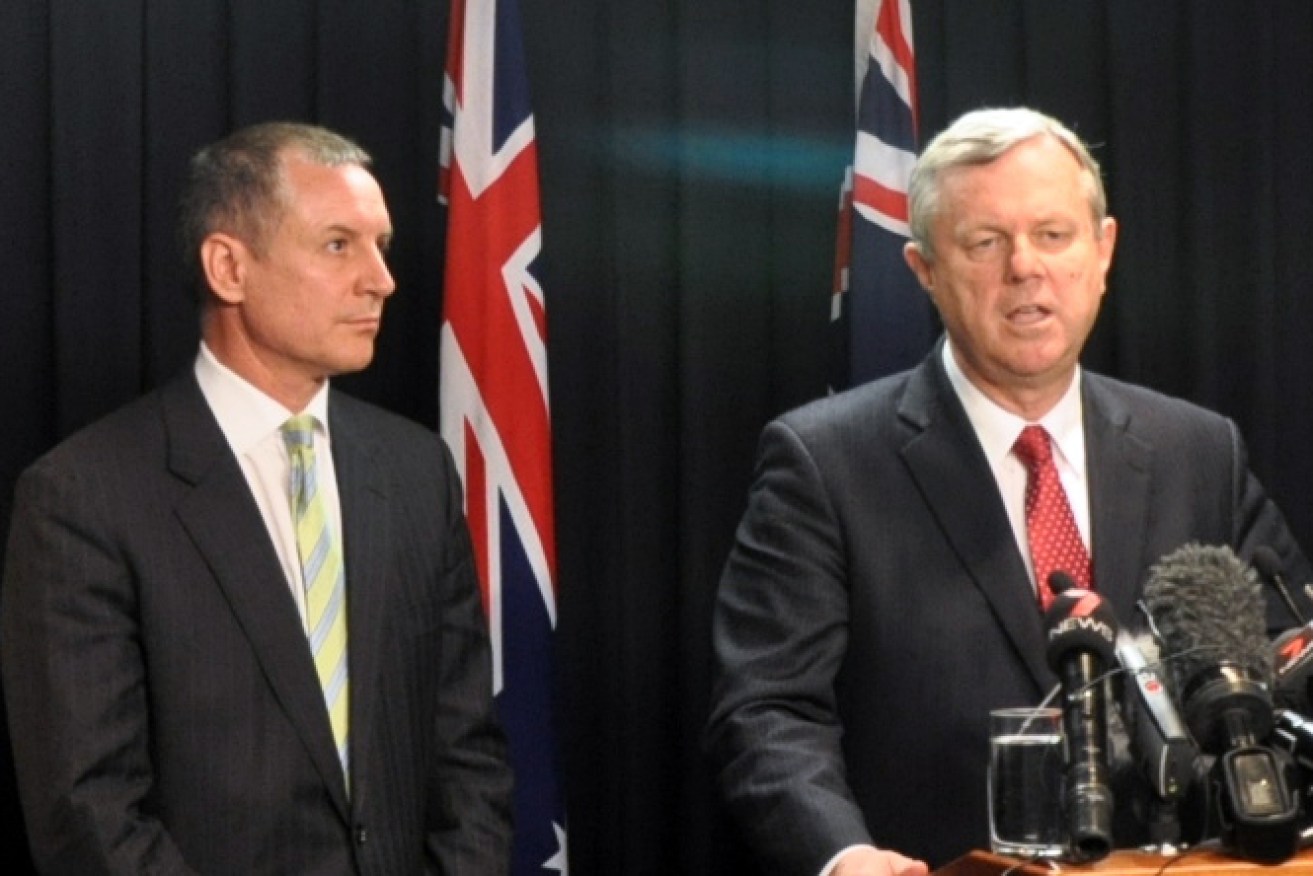
Premier Mike Rann confirms the leadership transition to Jay Weatherill in 2011. Photo: Sarah Malik / AAP
SA Labor has long boasted about its relative leadership stability.
It’s had just three leaders in the past 27 years – during which time the Liberals have had seven – so the handover, ten years today, of the state’s top job remains a symbolic moment.
It tells competing stories – of division and unity, ambition and political mortality; but few would now contest that it paved the way for another four-year term under Labor rule.
And it was a long time coming – as one source puts it, a takeover “two years in the making”.
“I suppose for me it was really the 2010 election when I decided we needed a change in direction,” says Jay Weatherill, who was sworn in as the state’s 45th premier on Friday October 21, 2011 – ten years ago today.
“That’s why I put myself up for deputy leader.”
Weatherill, to the chagrin of his party’s Right faction, challenged Rann’s longtime offsider, Treasurer Kevin Foley, in the immediate aftermath of an unlikely election win in which Foley had led the charge against the Liberal Opposition’s economic stringency.
It was a divisive move – but a calculated one.
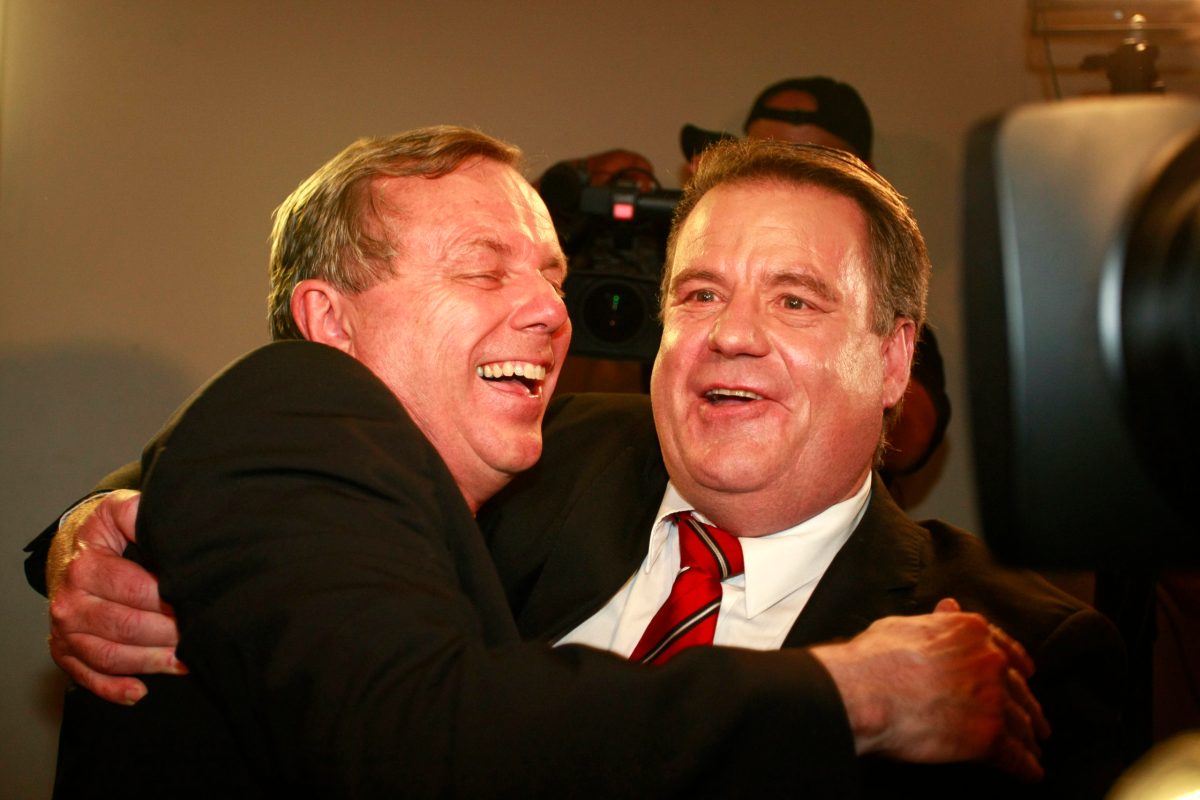
Rann and Foley celebrate winning the 2010 election. Photo: James Baker / AAP
Sources tell InDaily the Left resolved to challenge Foley as a way of putting the party – and the public – on notice about Weatherill’s leadership ambitions.
“We knew Jay wouldn’t win – but it put him front and centre as a potential future leader,” one insider reflects.
From that perspective, the gambit paid off.
While Right faction insiders privately railed against any prospect of Weatherill winning the party’s top job, public polling “very quickly” shot the then-Education Minister to 33 per cent as the public’s preferred successor to Rann – while John Rau and Jack Snelling, the dominant Right faction’s heir apparent, languished on low single digits.
Weatherill says now that late in the Government’s second term he had resolved to run for higher office, no matter the election outcome.
“That was probably the point where I thought, if we did [win] I’d certainly advance myself – and if we didn’t, I’d put myself forward as a change in direction,” he says now.
I was offering myself to lead the party
Rann, who had led Labor back from political oblivion after the State Bank to its greatest electoral triumph in 2006, was stumbling through a series of controversies.
Labor survived a 2010 campaign dogged by frequent appearances by Michelle Chantelois, a former parliament house waitress who claimed to have been in a relationship with the ALP leader – a claim he denied – and whose estranged husband had dramatically bashed Rann at a Wine Centre function a year earlier.
But the Government struggled to reclaim momentum.
A move to belatedly rein in spending prompted a plan to axe 4000 public servants, sparking union furore that spilled over into protests outside Labor’s 2010 state convention.
Foley and Rann, the premier sporting ‘Movember’ facial hair, arrived with police escorts and were roundly heckled – the Left seizing on the mayhem to move a motion calling for the pair to be sacked.
The vote – that was soundly, though not universally, defeated – was moved by Wayne Hanson, then-secretary of the Australian Workers Union, from which Weatherill hailed.
The scandals kept coming: the Right put up long-time numbers man Bernard Finnigan for elevation to Rann’s cabinet in a February 2011 reshuffle that was to symbolise Labor’s rejuvenation, with Foley moving on as Treasurer and Deputy Leader, replaced not by Weatherill but by Rau.
Two months later, Finnigan was arrested on child pornography charges.
“The fortunes of the government… continued to decline pretty significantly after [the 2010 election] and there was a view that there needed to be a change,” Weatherill says.
“The truth was, Mike had already – at least internally – decided that he wouldn’t serve out the whole of that next term [so] the only real question was when.”
There was another question – who.
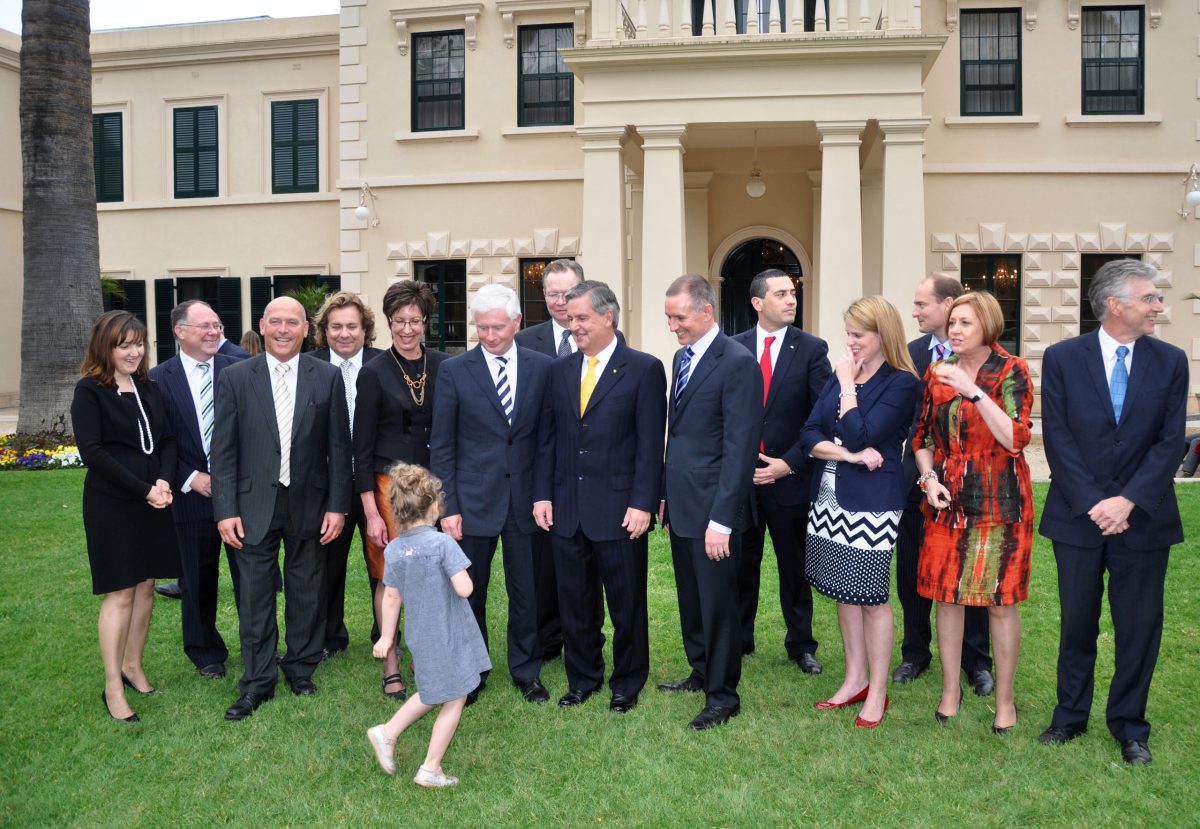
Govenor Kevin Scarce with the first Weatherill ministry, ten years ago today. Photo: Tim Dornin / AAP
The Right was split between advocates of Rau, the Attorney-General and Rann’s preferred successor, and Snelling – the fledgling Treasurer and confidant of key Right faction bosses.
One of those bosses became a decisive player in the leadership coup, and in so doing became a lightning rod for public criticism as an archetypal ALP ‘faceless man’, leading the Right ‘Labor Unity’ faction and a major union, the Shop, Distributive and Allied Employees Association – but not holding a seat in parliament.
Today, though, Peter Malinauskas is the Leader of the Opposition, and five months from contesting his first election as Labor leader.
By now though, Weatherill and his backers were openly agitating for the leadership.
“I had to be completely transparent – I was clear with Mike, and with anyone who’d listen, that this was my ambition… I was offering myself to lead the party when Mike was ready to go,” Weatherill tells InDaily.
“I thought our position was perilous, and getting worse – I put it to Mike; I put it to really anyone that would listen [and] it was just a question of trying to persuade them… and also make them feel comfortable that I was going to govern for all and lead the party in a way which was ecumenical.”
A series of meetings took place between key players.
Weatherill and Malinauskas broke bread in a morning coffee chat at Chianti on Hutt St – a very public venue that became more so when it was snapped by an Advertiser photographer and splashed on the front page of the paper.
No-one concedes to tipping off the media, but the coverage helped propel the notion that the party was ready to move on.
There were several conversations over the Easter period of 2011, during which both factions agreed to retreat and consider their respective positions.
The Left were told to consider what they wanted.
The Right were told to consider what it would take for them to get behind Weatherill as leader.
When they reconvened, Weatherill’s camp was adamant: he was putting himself forward.
In the end, according to sources, the price the Right faction asked in return for providing its numbers was surprisingly small.
When the unaligned Rann left parliament, the Right would get his safe northern suburbs seat of Ramsay.
The Left agreed, with a caveat: they had to preselect a woman to run there.
If it seemed like loose change for such a significant factional barter, there was a bigger prize on offer.
“They wanted to win the election too,” says one insider.
“We were going to go to a fourth election with a tired and, to a degree, damaged Rann.”
The last meeting confirming cross-factional support for Weatherill’s leadership included the aspiring Premier himself, along with Snelling and the leaders of the Right and Left factions, Malinauskas and PLUS [Progressive Left Unions and Sub-branches] convenor David Gray, who declined to comment today.
A date was set for Rann to be told: it was resolved for a Friday at the end of July, after which the Premier was scheduled to leave for a business trip to India.
Only one of Snelling and Malinauskas was supposed to break the news to Rann; in the end, both went to the fateful meeting.
It did not go well – particularly after the fact of the meeting taking place was leaked to the ABC.
Mike felt humiliated, and understandably – he was humiliated
Snelling, who recently left the party and is now leading the charge to rejuvenate the formerly defunct Family First religious conservative brand for next year’s election, says he regrets “the way it happened”.
“In particular that Mike was so bitter and saw it as a personal betrayal on my part, I thought was unfortunate,” he says.
“It should have been handled a lot better.”
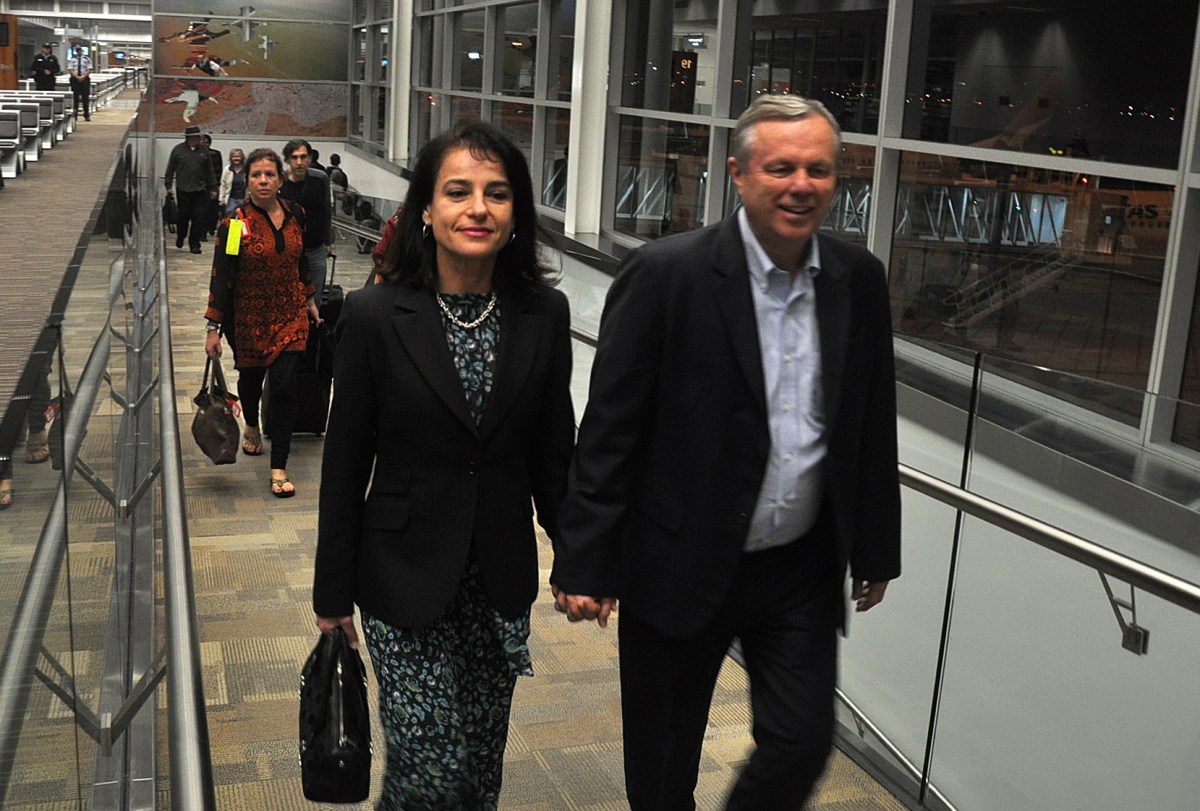
Rann and his wife Sasha Carruozzo return to Adelaide from India amid the leadership tension. Photo: Liza Kappelle / AAP
Rann was said to be angry that the Right was backing Weatherill, who had destabilised his government in its moment of victory in 2010 with his challenge to Foley, and incensed at the request for him to vacate the leadership quickly.
But Snelling reveals the anger came for another reason.
“He was angry because it leaked – and it leaked before we’d even had the meeting,” he said.
Asked who he suspected of the leak, Snelling said: “I’ve got a couple of thoughts, but I honestly don’t know… I’ve got no way of knowing for sure and no-one has ever confided in me.”
“It wasn’t me – that’s the only thing I can say with absolute certainty,” he says.
At any rate, “Mike went into the meeting angry”.
“It looked bad for him, which was not the intention [but] we had to go ahead with it… we couldn’t not – because that would have been even worse.”
In his valedictory speech when he left parliament before the 2018 election, Snelling reflected on the events, saying that “by 2011, it was clear that the government was in trouble, and it was well known that Mike wanted to retire probably around the 10-year anniversary of his premiership”.
“Who was to take over from him needed to be resolved, and quickly [and] I came to the conclusion that [Weatherill] was our best bet,” he said at the time.
“There was no doubt that he commanded the support of a majority of the wider party, and any attempt by the Right faction to use its numbers in caucus to impose someone else would be badly received – we would be on the back foot from the start.
“The slightest stumble would be compared unfavourably to the would-be premier who had been passed over.”
However, “all this had to be communicated to Mike, and the job of doing so was given to me”.
“The great shame is that it became known that the meeting was happening even before it had happened, and, instead of Mike being able to retire gracefully, he was publicly backed into a corner and humiliated,” he said.
“Mike has never forgiven me, and this is one of my greatest regrets.
“If I had spoken to Mike on my own and the meeting had not leaked, the transition could have been better managed and I do not think he would harbour such bitterness.”
But he said he was “comforted by the knowledge that we made the right decision”, telling parliament in 2017 that Labor’s capacity for regeneration was a major “reason for our success”.
He says now that he’s “still of that view” that he has not been forgiven for his role in the transition.
“I’m not expecting him to forgive me,” he says.
“But I had regard for him – it’s just sad it leaked… Mike felt humiliated, and understandably – he was humiliated.
“It didn’t need to be that way.”
For his part, Weatherill says Rann “might have been surprised that ultimately the Right had decided to swing their support behind me”.
“I think it was a surprise to some people,” he says.
One source insists Rann was never told to stand aside “straight away”, and that what transpired was “exactly what was put to him” – that he should leave before Labor’s next party convention.
“I had a strong view that we needed at least two budgets to recover our position [and] we needed every minute,” says Weatherill.
“That was the only debate, about timing [but] in the end an agreement was reached.”
It was reached with Rann away in India, while political turmoil erupted at home.
Snelling says conversations with the absent Premier were conducted via his Chief of Staff, now magistrate Nick Alexandrides, and that things settled down quickly.
“It was only a day or so, from memory – it wasn’t that long before Mike saw it was inevitable and agreed to a transition.”
The outgoing Premier had one stipulation – “he said he wanted to open the new film centre” at Glenside.
The handover was scheduled for October 20 – that was Rann’s day to say goodbye.
Weatherill was sworn in the following morning.
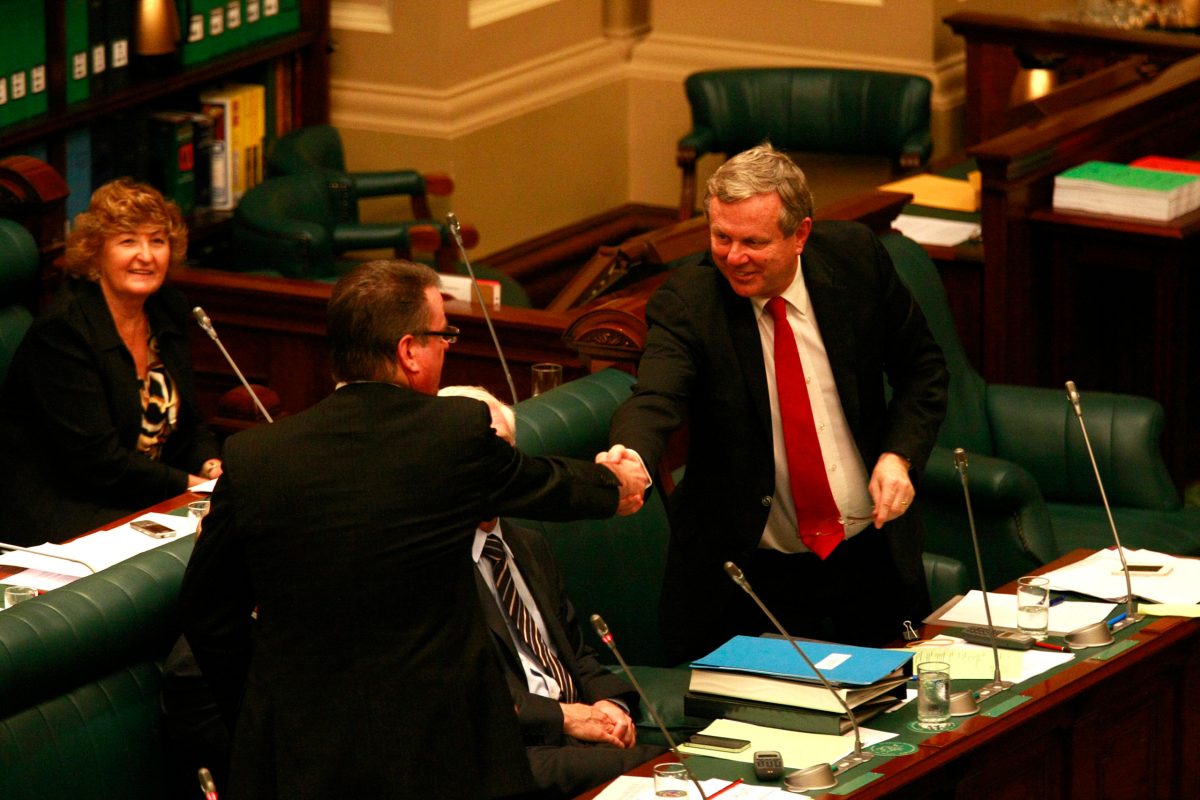
FAREWELL: Rann and Foley exchange pleasantries on the outgoing Premier’s last day in office. Photo: James Baker / AAP
If Rann remains angry, as Snelling believes, he doesn’t show it publicly.
“Politics is about change as well as continuity,” he tells InDaily via email.
“I had more than 17 years as Labor leader and served almost 10 years as Premier – it was the greatest privilege.”
And, he notes, “it was also a good innings and I have enjoyed what I have been doing since”.
That’s involved high-level diplomatic posts before establishing his own consultancy firm, engaging with green energy companies – a policy area he believes SA has taken a lead in because of measures pursued under his tenure.
He and wife Sasha Carruozzo remain in limbo in Italy awaiting a return to SA, which they hope to happen before Christmas.
“Together Jay and I led continuous Labor governments for 16 years,” he says now.
“Jay can be very proud of his achievements as Premier and before that as a Minister from day one in our government in 2002… I think it is terrific that he is now pursuing his passion for improving early childhood education [in Andrew Forrest’s Minderoo Foundation].”
While he didn’t mention Snelling, Rann also insists he gets on “very well with Peter Malinauskas”.
“We catch up when I’m back in Adelaide,” he writes.
“It was good to see him at the Carnegie Mellon University Australia event for the launch of the Downer-Rann scholarships last week held at the Adelaide Town Hall where we both spoke (for me, via Zoom).
“Even in his late twenties, well before he was elected to parliament, Peter stood out as someone who would play a senior role in either the Federal or State Parliament [and] people were already seeing him as a future Premier… he is well-balanced, disciplined and seeks to unite rather than divide people.”
Malinauskas, who declined to comment on the leadership talks, agrees that “Mike and I talk, not frequently but we chat from time to time”.
“He’s been an incredibly good sounding board,” he says.
“He led the Labor Party out of Opposition – and I’m trying to do the same thing.
“I think the guy has been an absolute class act in the way he’s conducted himself, not just during his political career but after it as well, and been utterly dignified in how he’s carried himself as a former Premier.”
He says Rann is “a giant of the Labor Party”.
“He was leader for seven years [in Opposition] – and I have a newfound appreciation of how difficult that task is – and then won us three elections.”
Weatherill says Rann “was keen to make sure the party was settled about the replacement”.
“He didn’t want a brouhaha about his replacement,” he says.
They knew if they were going to give me the keys to the car, I was going to drive it
He now says the episode showed a “maturity… in stark contrast with what we’re seeing now inside the Liberal Party”.
“The SA ALP has been a very successful political outfit -there’s a maturity about wanting to succeed,” he says.
“The idea that we’re a government of long duration, we’d had a good run, we should just put the cue in the rack… that’s not part of the culture of the Labor Party.
“The Labor Party’s interested in continuing to form governments and govern… and it shows you how serious [the Right were] that they contemplated someone that wasn’t from their group. Compare that to what’s going on at the moment [in the Liberal Party], where the factional interests seem to be dominating the broader interests.”
But, he concedes, “the person who wore that was Mike”.
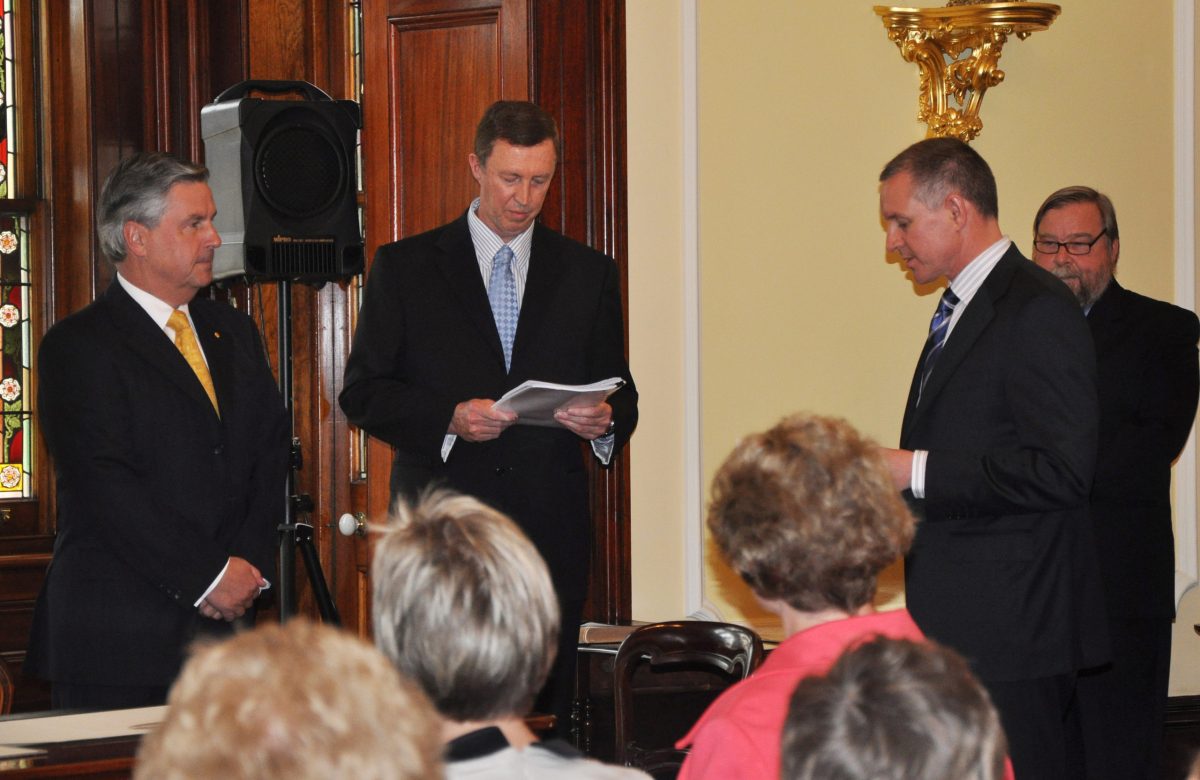
Jay Weatherill sworn in by Governor Kevin Scarce. Photo: Tim Dornin / AAP
“He made a decision that he wanted to continue to have a successful government, and win the 2014 election, more than he was interested in advancing his own interests.”
“That was always the dynamic – the SA branch always had a dynamic of power-sharing and consensus really… I wouldn’t have taken the job if I had to bend myself out of shape – they knew if they were going to give me the keys to the car, I was going to drive it… but I think that was wise for them not to turn me into some imitation of a right-winger.”
Weatherill says a big advantage after the bitterness dissipated was having “a predecessor that didn’t create any difficulty for me and a party that was completely behind me”.
“I never once had to look over my shoulder,” he says.
“I just think they were more interested in winning than indulging their own factional interests… you can have total control over something with no influence, or have significant influence [in government] – they decided being in government was more important than controlling who was the Premier for a short period of time, and spending an extended period in Opposition, in the wilderness.”
Rann says: “I always use the analogy that leading a party is like piloting a plane – it needs two wings to fly.”
“Occupying the centre as pilot is essential to keep the plane going in the right direction,” he says.
“Peter totally gets that… as I’ve often said, being Opposition leader, a tough role, is a great training ground for the role of Premier.”
“It was all about team work, and winning a big majority in 2006 enabled us to build a base to underpin a longer than usual run in government to get things done,” he said, citing a range of achievements including “setting out to restore the finances, invest in transformational infrastructure; win defence projects with our investment in Techport and other high tech precincts, lead the nation in renewable energy and reducing emissions”.
He also cites economic growth, health infrastructure including the new Royal Adelaide and its biomedical precinct, raising the school leaving age and an investment in early childhood education including the Premier’s Reading Challenge and his environment and social inclusion agenda, along with “the upgraded Adelaide Oval, Convention Centre, the Tonsley Innovation Centre, the Bowden redevelopment, the drought proofing of Adelaide, tram expansion and extending the railway to Seaford”.
“Over 16 years, Jay and I led remarkably united and talented Cabinets… ministers liked and got on well with each other – that helped enormously.”
In January 2012, Rann departed parliament.
His replacement in Ramsay was Right-faction-aligned Zoe Bettison.
No-one in the party has rejected the claim that the seat was part of the deal to oust Rann, but one Right faction figure insists: “Zoe was the candidate because she was the best person for the job.”
Bettison tells InDaily she’s unaware of the factional shenanigans in her electorate.
“There’s always speculation [but] I can’t say I was privy to those discussions… obviously I was a beneficiary of that though,” she says.
“There were many, many people who would have liked to run for the seat of Ramsay – there still are [but] that’s above my pay grade.”
However, she says, the outgoing former Premier “was quite supportive of me personally”.
“He was very well regarded in the seat – and I’ve always been grateful for his support,” she says.
TOMORROW: Weatherill reflects on his greatest policy “failure” – and how it has driven him in life after politics.




